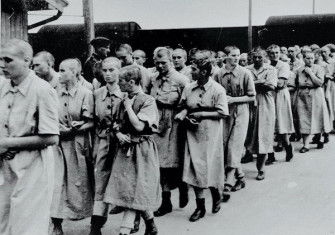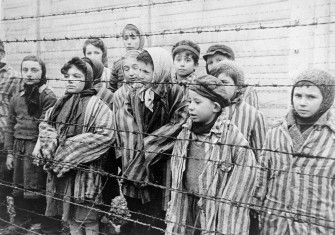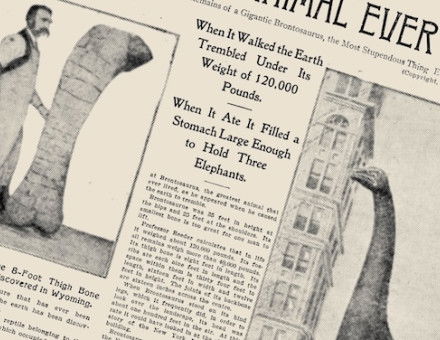The Roma Holocaust
Europe’s Roma were the victims of Nazi genocide during the Second World War, but their persecution did not end in 1945.
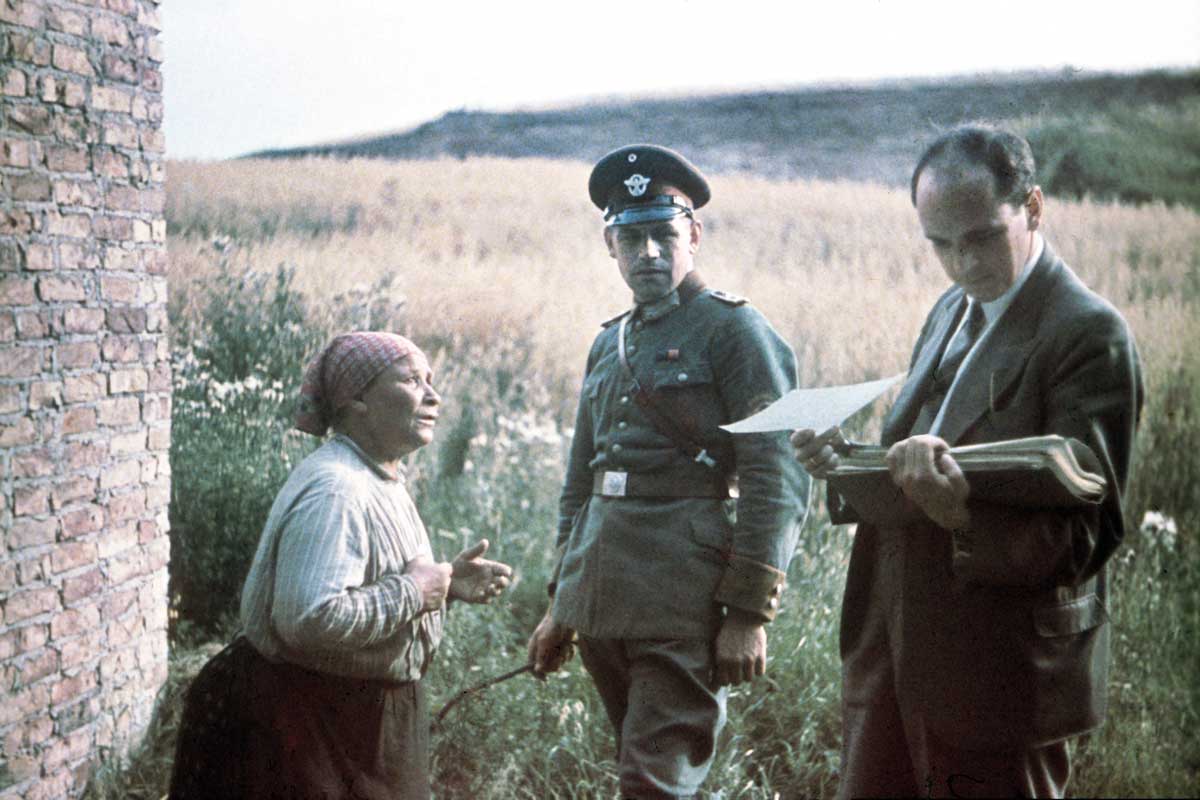
In 1944, I was deported to the concentration camp in Terezín, where I was imprisoned until May 1945. After returning from the concentration camp I did my military service, and then moved with my family to the village of B., as part of the drive to resettle the borderlands … My family and I lived decently from what I earned as a forestry worker; I didn’t live like a Gypsy, and I always had a fixed residence. I have never had a criminal record. Despite this, I’ve been put on the new register of Gypsies in 1947, and I was issued with a Gypsy registration card. I am requesting that my name be removed from the Gypsy register, and that my registration card be cancelled.
Václav R. was one of hundreds of thousands of people persecuted as ‘Gypsies’ between 1933 and 1945 as a direct result of racial policies adopted by Nazi Germany and its allies across Europe. His petition to the Prague authorities in 1948, shortly after a communist regime had been established in Czechoslovakia, shows that institutionalised discrimination towards ‘Gypsies’ – a derogatory term used to refer to a large and diverse ethnic minority who might see themselves as belonging to a number of groups, including Roma, Sinti, Manouche or Jenisch – did not end with the cessation of military conflict. Was Václav R. really a ‘Gypsy’? The authorities claimed that his lifestyle marked him out as such, but he argued the opposite. It is impossible to tell from this petition whether he identified as Roma in his private life. But he was clearly aware of the danger involved in being labelled a ‘wandering Gypsy’ – a category created by a 1927 law regulating the movements of people ‘living like Gypsies’, adopted in the democratic First Czechoslovak Republic – in the unsettled conditions of postwar Europe.
In every country brought under Nazi control during the Second World War, Roma, like Jews, were persecuted on racial grounds. Roma from Germany, Austria, the Czech lands, Croatia, the Netherlands, the Baltic states and parts of the occupied Soviet Union suffered the heaviest losses. In some places, such as the Nazi Protectorate of Bohemia and Moravia, almost the entire pre-war Romani population was wiped out. Although elsewhere – in France, Italy or Romania – the proportion of deaths was lower, Roma in these countries were deported, interned in concentration camps and suffered severe restrictions of their civil rights.
Roma survivors were frequently left crippled by forced labour and violent treatment in the camps, or suffered the lingering after-effects of sickness and malnutrition. Some had been subjected to sterilisation or medical experiments. Roma who escaped death from mass shootings, gassing, disease or starvation often returned to find their property destroyed or stolen, their families and communities scattered. The psychological legacies of genocide affected those who had experienced Nazi rule directly, as well as their children and grandchildren.
In all these ways, the legacies of the genocidal persecution of Roma and Sinti recall the trauma experienced by European Jews after the Holocaust. Yet, in other important respects, the postwar experiences of Roma and Jews were very different, above all because Roma continued to face discrimination and persecution for decades after the defeat of the Third Reich. Václav R.’s petition, begging to be removed from the ‘Gypsy register’, illustrates this point. Discrimination against Roma was – and remains – embedded in the everyday practices of police forces, teachers and social and healthcare workers. The perception that ‘Gypsies’ were persecuted by the Nazis because they were criminals or ‘asocials’ rather than on racial grounds was used by European states for decades to deny Roma compensation or recognition as victims of genocide. Romani activists and civil rights leaders battled against these rules, in both eastern and western Europe, yet the history and legacies of the Roma Holocaust remain largely unknown.
An invisible genocide?
As many as half a million people were victims of the Roma Holocaust, according to the United States Holocaust Memorial Museum, although historians may never establish an exact figure. The absence of a central plan for the destruction of Europe’s Roma has led the anthropologist Michael Stewart to describe this as an ‘invisible genocide’. Yet the historian Anton Weiss-Wendt argues that locally and centrally devised schemes for the solution of the ‘Jewish Question’ and the ‘Gypsy Question’ were often strikingly similar, not only in scope, means and brutality, but also in the dehumanisation of their victims.
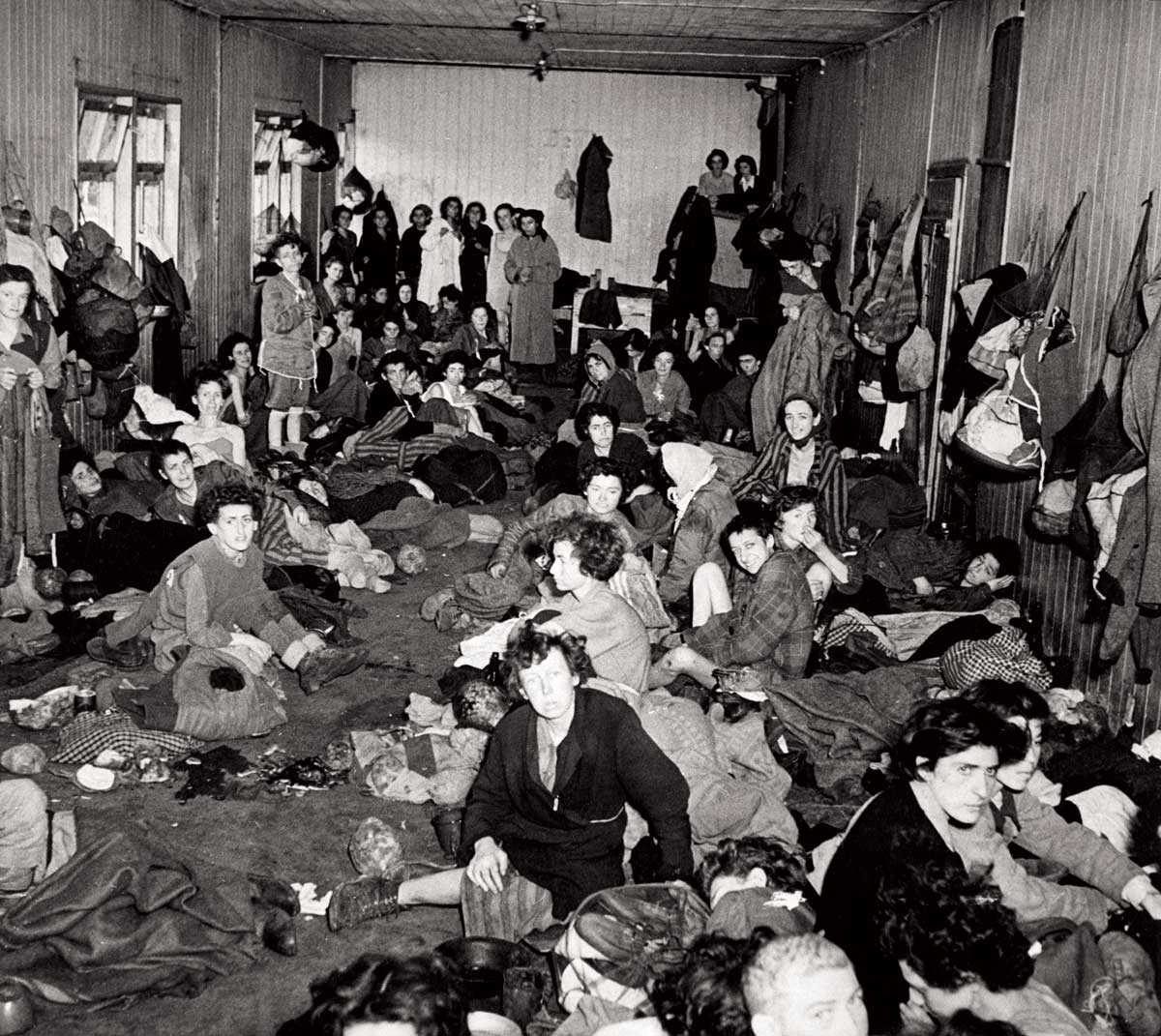
The persecution of Roma and Sinti assumed genocidal proportions in the Third Reich, but across Europe plans for the solution of the ‘Gypsy Question’ built on much older legal, political, social and medical practices. Within months of coming to power in 1933 the Nazis passed a Law for the Prevention of Offspring with Hereditary Diseases, which singled out ‘Gypsies’ for sterilisation on racial grounds. Approximately 400,000 people were sterilised under the Hereditary Health Law, which drew on eugenic ideas that were widely accepted in Europe and the US at the time, but which were enforced more radically in Germany than elsewhere. The 1935 Nuremberg Laws excluded ‘Gypsies’ as well as Jews from German citizenship on racial grounds, prohibiting them from marrying Germans.
‘Gypsies’ were forced to move into special camps on the outskirts of German cities such as Berlin, where a ‘Gypsy camp’ (Zigeunerlager) was set up in the district of Marzahn before the city hosted the 1936 Olympic Games. In 1938 Heinrich Himmler ordered all Gypsies in the Reich to be registered as either ‘pure Gypsies’ or ‘mixed blood’, following his decision to ‘solve the Gypsy Question on the basis of their character as a race’. These instructions were willingly implemented by the biologist Robert Ritter, who headed the Research Institute for Racial Hygiene at the Reich Health Office.
After the German annexation of Austria in 1938 and the occupation of the Czech lands in 1939 local authorities outside Germany began to implement more radical measures against ‘Gypsies’. Austrian Roma, the historian Gerhard Baumgartner has written, were stripped of legal protection and found themselves at the mercy of local mayors, bureaucrats, police officers and party thugs. To the west of Germany, shortly before the Nazi invasion, the French government issued a decree ordering ‘nomads’ (an administrative category created under the Third Republic in 1912) to stop travelling and settle under police surveillance in a designated district. The Fascist regime in Italy prohibited ‘Gypsies’ from travelling and adopted a policy of internment. With the outbreak of the Second World War, Roma and Sinti were persecuted on the basis of long-standing perceptions of Gypsies as asocial, work-shy, vagrants or spies.
Who counted as a ‘Gypsy’? There was – and still is – a huge difference between the way outsiders classified ‘Gypsies’ and how the diverse Roma and Sinti communities across Europe defined themselves. Contrary to popular belief, Romani communities were not isolated from the societies in which they lived, but were intimately connected through economic, social and cultural ties, evident in the integrated communities of rural Moravia, the Roma hamlets on the outskirts of villages in the Austrian Burgenland and Transylvania, or the peripatetic Sinti or Manouche families of Germany or France.
From the late 18th century, however, European states increasingly defined Gypsies as inherently criminal and dangerous, a problem to be solved, either by assimilation or expulsion. The ‘enlightened’ Austrian emperor Joseph II wanted Gypsies to become Austrian citizens and required them to settle, give up their language and in some cases also their children, whereas the German states relied on expelling itinerant Roma across municipal borders. In the 19th century, police forces and local authorities sought ‘objective’ definitions of Gypsies from the emerging sciences of criminology and physical anthropology. The Austrian criminologist Hans Gross’ Handbuch für Untersuchungsrichter (‘Handbook for Investigative Judges’), first published in 1893 and followed by six editions and numerous translations, devoted an entire chapter to claims about the alleged physical and psychological characteristics of ‘the Gypsy’, who was defined as ‘different from every man of culture, even from the crudest and most degenerate’.
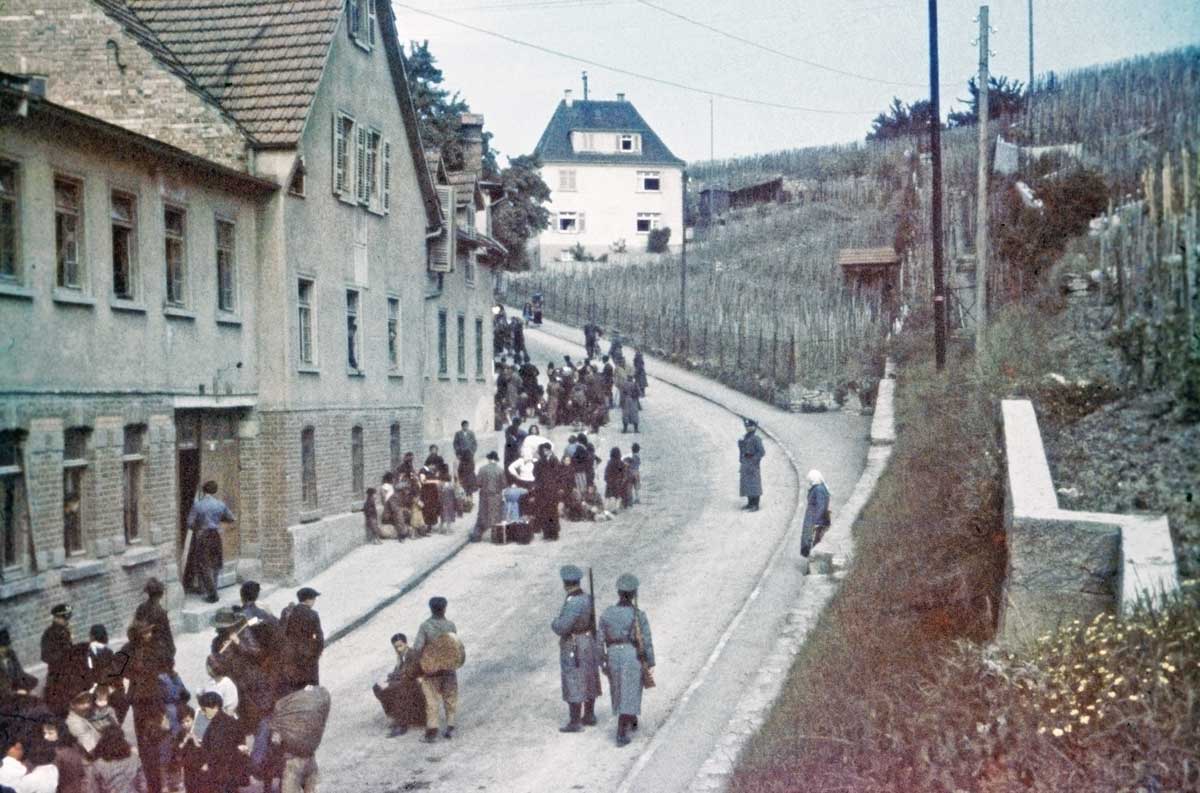
Ostensibly based on social criteria – such as vagrancy – the definition of a Gypsy had become increasingly racialised by the early 20th century. Ethnographers and artists treated nomadism and criminality as innate attributes of the ‘Gypsy’, reflected in language and physical characteristics, and the perception that Gypsies were a racially distinctive group in turn influenced the way Roma were classified, for example by census officials. During the First World War this racial stereotyping led to Gypsies being locked up in internment camps in Alsace and Austria-Hungary. Many European states – including France, Germany and Czechoslovakia – also introduced ID cards for itinerant Gypsies, which bore the bearers’ fingerprints and photographs. Children were also included on these passports, which further cemented the association between the ‘Gypsy way of life’ and allegedly hereditary characteristics.
Pre-war police registers of Gypsies were often used by the authorities in the occupied or Nazi-allied states to implement anti-Gypsy policies during the Second World War. Weeks after the invasion of Poland in September 1939 the Reich Security Main Office ordered the deportation of 30,000 ‘Gypsies’ from the Reich eastward to the Polish Generalgouvernement, but it was the German invasion of Yugoslavia in April 1941, followed by the massive push into the Soviet Union in June, that further transformed the Nazi approach to the ‘Gypsy Question’. The offensive against the Soviet Union turned the military conflict into a total, genocidal war. Nazi forces began a new phase of what Hitler called the ‘war of annihilation’, aiming to destroy the Soviet Union and colonise, enslave and murder the people living there. The persecution and killing of Jews shifted to a systematic attempt at total destruction. This would also pave the way towards the genocide of Roma. In late autumn some 5,000 Austrian Roma were deported to the ghetto in Łódź; those who did not die there (mainly from typhus) were gassed in mobile vans at the Chełmno concentration camp. In Yugoslavia, the Wehrmacht rounded up and shot Roma, Jews and resisters. With the opening of the Eastern Front, the drive to create a ‘New Europe’ led to the genocide of Jews and Roma by SS mobile killing squads Einsatzgruppen on Soviet territory now occupied by Axis forces.
Among the German allies, the fascist regimes in Croatia and Romania persecuted the Roma living in their territories with particular ferocity, although the Slovak fascist state also restricted the rights of Gypsies and condemned many to forced labour. The Romanian government of Marshal Ion Antonescu deported 25,000 Roma – along with 150,000 Jews from Bessarabia and Bukovina – to Transnistria, a region between the Bug and Dnieper rivers. Around half of the deported Roma died from starvation or disease. In May 1942, the Ustaša regime in the Independent State of Croatia ordered the deportation of all Gypsies to the Jasenovac concentration camp, where guards carried out mass executions. Between 16,000 and 40,000 Roma from Bosnia and Croatia are estimated to have been killed in Jasenovac.
On 16 December 1942 Himmler ordered the deportation to Auschwitz of the 10,000 Roma still in Germany. Construction of a Zigeunerlager in Auschwitz-Birkenau began in 1941 and was brought into operation in March 1943. According to the camp records, nearly 21,000 Roma died there. Testimonies suggesting that inmates of the ‘Gypsy camp’ rose up in armed resistance to prevent the liquidation of the camp in May 1944 have inspired Romani activists in recent years to commemorate 16 May as a day of Romani Resistance. In August 1944 the Auschwitz Gypsy camp was liquidated. Inmates capable of work were sent to Buchenwald; the remaining 4,200 Roma were killed by gas. In 2015 the European Parliament responded to calls from Roma communities to recognise 2 August as European Roma Holocaust Memorial Day. The Zigeunerlager at Auschwitz-Birkenau has become a powerful symbol of Roma Holocaust commemoration.
Survivors in postwar Europe
Roma continued to face persecution and discrimination after the defeat of Nazi Germany and the liberation of the occupied countries of Europe – for longer and to a greater extent than Jewish survivors. In liberated France, as Lise Foisneau has shown, people classified as nomades (according to the 1912 French law on ‘nomads’ and ‘foreign Gypsies’) faced violent reprisals – including executions – from local communities, who accused them of collaborating with the Germans during the Occupation. The language of the Manouches – a Romani group in France, who speak a dialect closely related to that of the Sinti – is similar to German, which might have given rise to these unfounded rumours. Moreover, locals sought revenge after the years when French nomades had been obliged to live among French communities who suspected them of theft and damaging property.
In Romania, Roma who remained alive long enough to make the long journey back from Transnistria, and returned to their villages and towns in 1944, often found that neighbours had moved into their houses, or that assets such as gold, left in safe-keeping with friends, had mysteriously disappeared. Similar experiences were faced by Czech Roma, such as the future lawyer and activist Tomáš Holomek, who returned from hiding in Slovakia to his home in Moravia, where his extended family had been comfortably integrated into the local community for decades, to discover that many of his relatives had been murdered in Auschwitz.
Postwar Europe was brimming with refugees and stateless people. Although international bodies, such as the International Refugee Organization (IRO), initially seemed willing to help Romani refugees from Germany, Czechoslovakia and the Italo-Yugoslav borderlands to emigrate, as the historian Ari Joskowicz has shown, this did not last long. Despite the nefarious use of population registers as a prelude to round-ups and deportations in the Third Reich, police and social welfare agencies swiftly revived pre-war rules and bureaucratic practices to deal with Gypsies after the liberation from Nazi rule, often employing the same people as ‘experts’, for example in the criminal police. The authorities in the newly established Federal Republic of Germany continued to discriminate against ‘Gypsies’ on the grounds that they were ‘asocials’ prone to criminal behaviour. Many German laws targeting Roma had been adopted before the National Socialist era and some West German Länder, for example Bavaria, did not regard them as having a racial character. The Bavarian Landtag voted in 1953 to re-enact a law on vagrancy (Landfahrerordnung), targeting those ‘so-called wandering people’ (so genannten fahrenden Volk) without explicitly naming Gypsies.
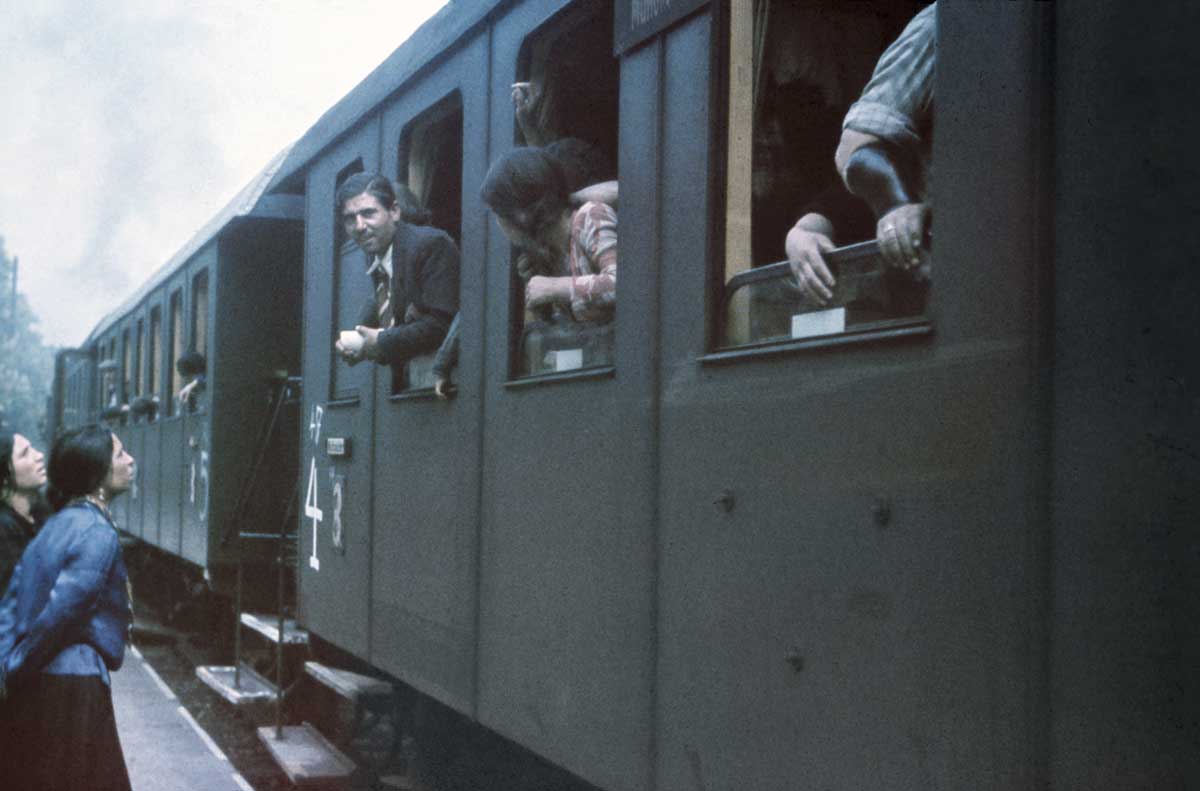
In France the 1912 law regulating the movement of nomades was not repealed until 1969, when a new law replaced the category of nomades with the new term gens du voyage (similar to the British term ‘travellers’). In the East, where communist regimes were being established, racially discriminatory language was also removed from legislation. Thus in Czechoslovakia the 1927 law on ‘wandering Gypsies’ was repealed after 1948, but police nevertheless continued to keep tabs on ‘nomads’. The plea of the forestry worker, Václav R., to be removed from the ‘Gypsy register’ demonstrates the fear inspired by such surveillance.
Claiming citizenship was a matter of survival for Romani survivors in the aftermath of the Second World War. As the Cold War intensified, many Roma shared the fate of other survivors who did not want to be repatriated to their home countries in the Soviet zone of influence. Romani families in the contested borderlands between Italy and the socialist republic of Yugoslavia, for example, were trapped in a legal limbo between East and West. For those who remained in Eastern Europe the legacies of wartime persecution and violence were compounded by the effects of postwar border changes and massive population displacement after the Nazi defeat, and by the demand for labour in the rapidly industrialising communist states established in the region. In Czechoslovakia, Roma were among the thousands of new settlers from the eastern parts of the country who arrived in the former Sudetenland after the post-1945 expulsion of three million Czechoslovak Germans.
This was also a time of new opportunities and Roma took up the offers of employment and housing as eagerly as other citizens. Communist governments eschewed explicitly racist language, but under the surface, there were significant continuities in the way that experts and authorities approached the Roma in the socialist countries. The largest Romani populations in postwar Europe lived behind the Iron Curtain and, throughout the Cold War, the communist authorities employed a mixture of coercion – sterilisation, segregation of children in special schools or removal to state foster homes – and persuasion – extensive provision of welfare, housing and health care – to achieve their goal of turning Roma into cultured socialist citizens.
Struggles for compensation
Official reluctance to recognise Roma as victims of persecution on racial grounds blocked compensation claims for Romani survivors in both western and eastern Europe. In West Germany, Sinti and Roma waged legal battles for two decades to rectify the opinion of the Federal Supreme Court that Roma had not faced racial discrimination until Himmler’s Auschwitz decree of 1942. It took 30 years for West Germany to recognise that the Hereditary Health Law, under which approximately ten per cent of German Roma were sterilised, was a racially motivated pillar of the Final Solution. In the 1970s, the German civil rights activist Romani Rose, born in Heidelberg in 1946, and his uncle Oskar, who had survived Auschwitz, set up the Association of German Roma. Rose organised a hunger strike in the former concentration camp at Dachau in 1980 to attract international attention to the genocide and to protest against continued use of prewar and wartime files on Gypsies by the German police, decades after the end of the war.
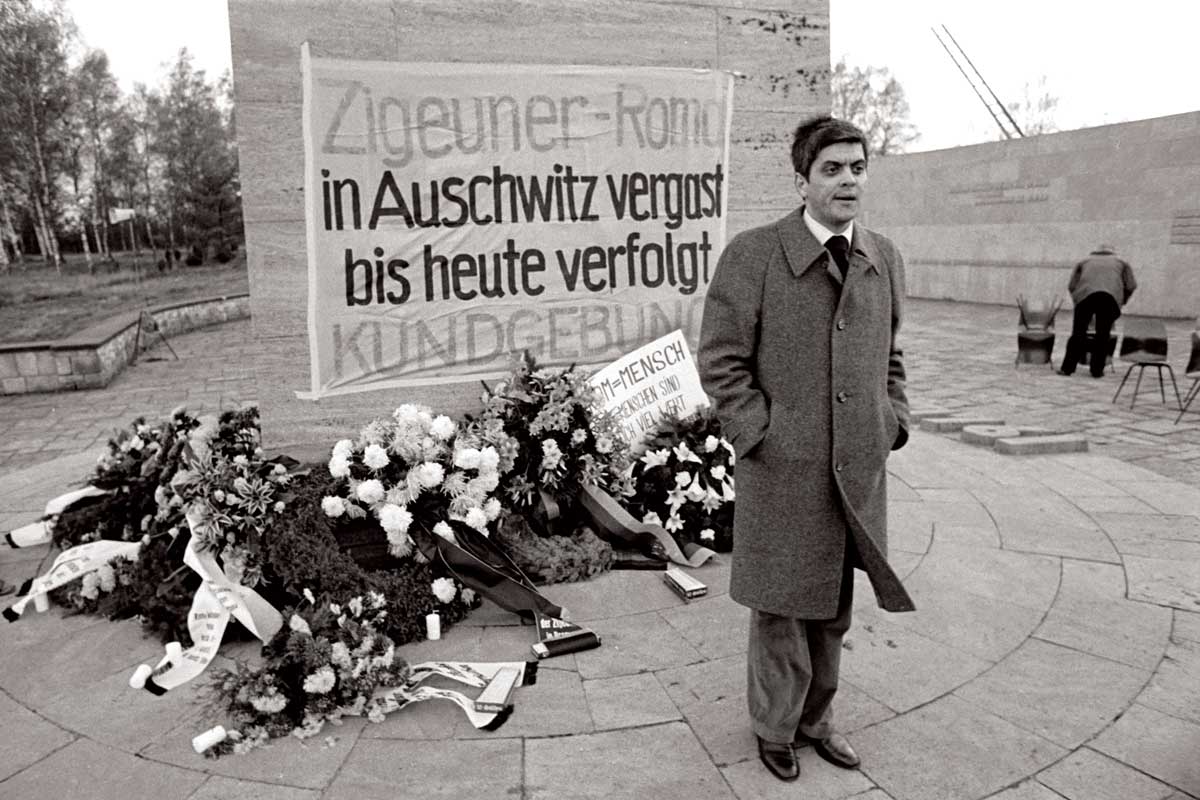
Whereas Romani survivors in West Germany pursued compensation through the courts, Roma in eastern Europe had to navigate a different system. The communist states compensated the victims of fascist persecution through the welfare system, by providing supplements to disability and old-age pensions for survivors. But the emphasis was on anti-fascism rather than race and, therefore, victims of racial persecution found it harder to gain compensation than those who had been persecuted on political grounds.
By the late 1960s, this was starting to change, particularly when West Germany began to offer compensation to victims of Nazi persecution outside the borders of Germany. Even in the oppressive conditions of Nicolae Ceaușescu’s Romania, as the historian Petre Matei has shown, the opportunity for gaining hard currency from the West through the compensation scheme opened a small window in which Romani activists could negotiate with the Romanian state for a greater say in policies towards the Roma population. In Czechoslovakia, this coincided with the events of the Prague Spring in 1968, when the move to create a more democratic socialism created an opportunity for Czech and Slovak Roma to set up their own representative associations under the National Front. Holocaust recognition – both in terms of commemoration and compensation – was one of the main aims of the Czechoslovak Roma Associations, many of whose leaders, such as Tomáš and Miroslav Holomek, were also first- or second-generation Holocaust survivors. After the 1968 Warsaw Pact invasion of Czechoslovakia, the Roma Associations were only able to operate for a couple of years, but their activities laid the foundations for the pioneering Museum of Romani Culture, which was set up by the younger members of the Holomek family after the collapse of the communist regime in 1989.
Legacies of genocide
The collapse of communism in eastern Europe in 1989 opened up possibilities for Roma across Europe to build new social and political movements. Holocaust commemoration and education became a central goal for organisations such as the international Roma youth network TernYpe. Activists in the Czech Republic, meanwhile, battled tirelessly for the removal of a pig farm from the site of a former concentration camp for Gypsies in Lety. Some scholars have noted that the international pressure on post-communist countries to engage in acts of Holocaust recognition in order to demonstrate their successful ‘return to Europe’ clashes with the way in which the Holocaust is remembered in Poland or Serbia, for example, where narratives of communist and ethnic victimisation are much stronger than cosmopolitan accounts of Holocaust memory.
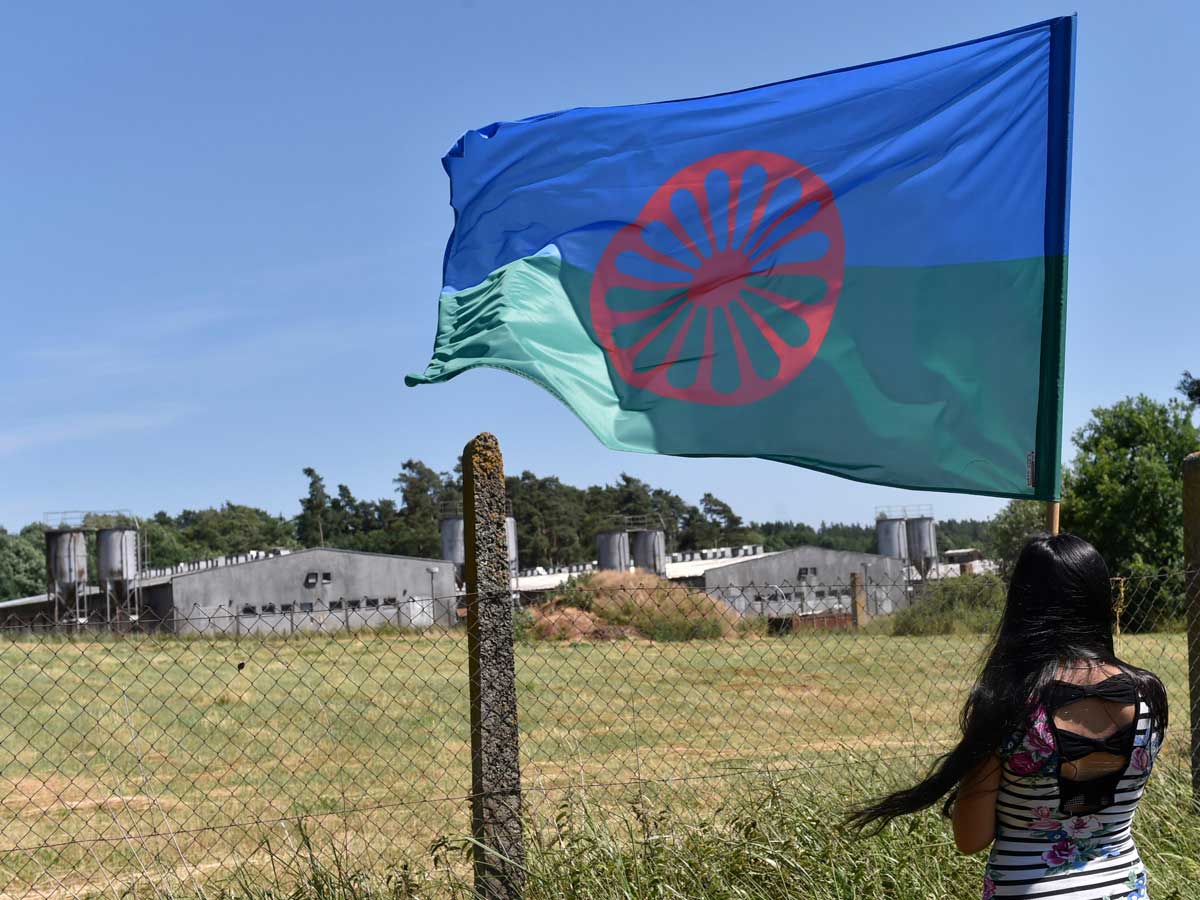
At the same time, the opening of European borders and the migration of Roma across the continent has once again revived old preconceptions about Gypsies. Aidan McGarry has described ‘Romaphobia’ as the last acceptable form of racism in Europe. Roma are still excluded from European societies, subject to racist violence, structural discrimination in education, employment or healthcare, and lacking in legal protection. The legacies of the Romani genocide are slowly being excavated by historians across Europe, drawing on interviews, archives and the records created by Romani activists, but the traces of the prejudices that led to the Roma Holocaust are still to be felt in Europe today.
Celia Donert is Associate Professor of Central European History and Fellow of Wolfson College, University of Cambridge. She is the editor, with Eve Rosenhaft, of The Legacies of the Romani Genocide in Europe since 1945 (Routledge, 2021).



